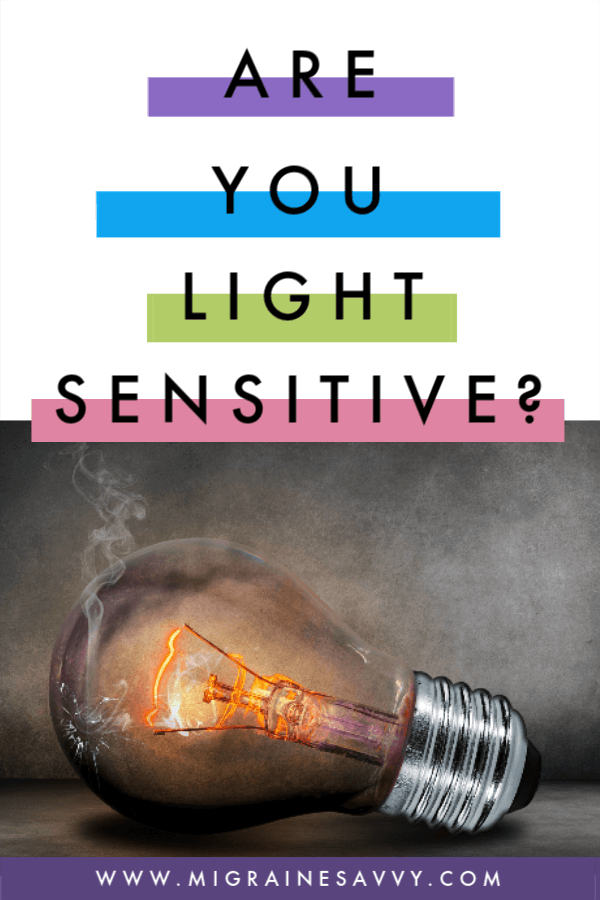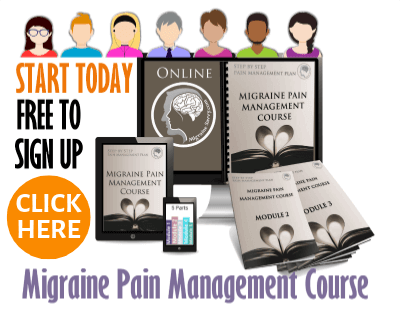- Home
- Prevention Tips
- Migraine Light Sensitivity
COMPLETE MAGNESIUM SUPPORT
My Top Choice - Magnesium Breakthrough - The ONLY supplement with all 7 essential magnesium types in one formula. Most only have 1-2 types, leaving you deficient.
Migraine Light Sensitivity: How To Reduce It
~ Guest post by Greg Bullock. Verified and published by Holly Hazen.
Do you struggle with migraine light sensitivity? All the time or just during an attack? Does exposure to any type of light make the pain of a migraine attack more unpleasant?
If so, you are experiencing what millions of people with the headache disorder have to endure: light sensitivity or, in medical terms, photophobia. In this post, we will take an in-depth look at how it affects migraine patients as well as offer tips for minimizing its impact on your life.

How do I know if I am sensitive to light?
When we discuss photophobia in relation to migraine, we take into consideration three general experiences reported by patients:
- Light sensitivity during an attack
- Light sensitivity between attacks
- Light that triggers individual episodes
Migraine light sensitivity during an attack
A strong aversion to light is one of the most common complaints from people with migraine during an attack. In fact, it has been shown to affect 80-90% of patients as part of the acute phase, second only to actual head pain. Hallmark signs of photophobia can include: eyestrain and wincing, worsening headache or other symptoms, sunlight sensitivity, intolerance of fluorescent lighting and wearing sunglasses excessively indoors.
Although light sensitivity is most likely to manifest while you are dealing with the full force of migrainous symptoms, it has been shown to present at other critical times too. For instance, more than one-third of people account for light sensitivity during the premonitory or pre-attack stage, usually two hours before the head pain sets in; a similar percentage note that they deal with it even after the attack is over—as an accompaniment to the fatigue, confusion and other postdromal side effects. You cannot even escape it in the aura phase either as it is the top sensory disturbance right before an attack. [1-3]
My #1 Choice in Magnesium Supplements
Migraine light sensitivity between attacks
Unfortunately, photophobia can become an ongoing complication as a result of the diminished sensory processing that generally occurs within the brain of migraine patients. Researchers have discovered that numerous migraineurs simply have a lower tolerance for light and other external stimuli at all times. [4] This means that brightness levels that would not otherwise bother a healthy individual can cause discomfort and pain in a person with migraine.
 Migraine Light Sensitivity, Before, During and After An Attack
Migraine Light Sensitivity, Before, During and After An AttackLight as a trigger
Light may not be the most reliable trigger for individual migraine episodes, but it still affects approximately 38% of patients—a number that is probably underestimated due to the often-imprecise nature of trigger identification. A more likely representation of the extent to which light influences migraine attacks may be found in a recent survey released by TheraSpecs; their findings revealed that bright lights initiate migraine symptoms in nine out of ten light-sensitive headache patients. [5]
What types of light cause photophobia?
By now, you are probably wondering about the types of light that can aggravate migraine so that you can avoid them. But there is just one problem:
ANY light has the capability of triggering or worsening your attacks.
This is primarily due to the prominence of blue light in our society; although this high-energy light allows us to enjoy well-lit department stores, sunny days and digital devices, it also can trip up the inner workings of a sensitive brain - ultimately unlocking all the pain of migraine along with it.
This further explains why fluorescent lighting, artificial screen light and bright sunlight are among the most problematic sources for migraine-related photophobia.
Low or short wavelength light, the primary catalyst for migraine attacks (between 480nm and 520nm representing both blue and green on the spectrum of visible light), is literally everywhere. Sunlight, fluorescent lights in department stores, computer screens - all digital screens. [8]
How can I reduce my own migraine light sensitivity?
It is probably tempting to hide behind sunglasses or a dark room all day; and while that behavior may be okay for a short period of time when attack-related pain is at its peak, it does not bode well as a long-term approach. The reality is regularly avoiding light in this manner can make your photophobia symptoms worse and also socially isolate you from the people and activities you care about.
Even though there are no medications that can reduce sensitivity to light either, the news is not all gloom and doom. One of the most effective therapies for photophobia in migraine is FL-41 glasses; these specialty-coated lenses block the blue wavelengths that wreak so much havoc on our brains.
They may sound too good to be true, but research backs up their value: FL-41 tinted lenses can not only minimize migraine light sensitivity during attacks, but they can actually prevent up to 74% of light-triggered episodes! [6,7] Better yet, there are also separate indoor and outdoor lens variations of the tint, depending on where you are most sensitive.
Don't make your migraine light sensitivity worse by wearing your sunglasses indoors forever. FL-41 tint is proven to prevent up to 74% of light-triggered migraine episodes!
There are a few national brands of FL-41 coated eyewear, but we caution you to do your own research and make sure they are cutting down on the right light. There are dozens of so-called "blue blockers" and other glasses that claim to help with headaches and migraines, but many do not offer the same protection as these precision-tinted glasses.
Here Are My Top 3 Recommendations:
As an Amazon Associate, I earn from qualifying purchases - affiliate disclosure.

Greg Bullock is passionate about supporting people who have light sensitivity associated with chronic conditions such as migraine, post-concussion syndrome, and TBI. He is currently the Marketing Manager and Content Editor at TheraSpecs, which creates precision-tinted glasses for people with light sensitivity.
 The Truth About Light Sensitivity And Its Effect On Migraine
The Truth About Light Sensitivity And Its Effect On MigraineMigraine Light Sensitivity References:
1. Schulte LH, Jürgens TP, May A. Photo-, osmo- and phonophobia in the premonitory phase of migraine: mistaking symptoms for triggers? The Journal of Headache and Pain. 2015;16:14. doi:10.1186/s10194-015-0495-7.
2. Giffin NJ, Lipton RB, Silberstein SD, Olesen J, Goadsby PJ. The migraine postdrome: An electronic diary study. Neurology. 2016;87(3):309-313. doi:10.1212/WNL.0000000000002789.
3. Hansen JM, Lipton RB, Dodick DW, et al. Migraine headache is present in the aura phase: A prospective study. Neurology. 2012;79(20):2044-2049. doi:10.1212/WNL.0b013e3182749eed.
4. Main A1, Dowson A, Gross M. Photophobia and phonophobia in migraineurs between attacks. Headache. 1997 Sep;37(8):492-5.
5. Bullock G. The Impact of Light Sensitivity. Retrieved from: https://www.theraspecs.com/impact2017/.
6. Blackburn MK, Lamb RD, Digre KB, et al. FL-41 Tint Improves Blink Frequency, Light Sensitivity, and Functional Limitations in Patients with Benign Essential Blepharospasm. Ophthalmology. 2009;116(5):997-1001. doi:10.1016/j.ophtha.2008.12.031.
7. Good PA1, Taylor RH, Mortimer MJ. The use of tinted glasses in childhood migraine. Headache. 1991 Sep;31(8):533-6.
8. Bullock, G (2018) Migraine Glasses Are Real. And Here’s Why They Are So Effective. Available [online] at: https://www.engineeringradiance.com/2018/06/migraine-glasses-are-real-and-heres-why-they-are-so-effective/
WANT MORE TIPS? Subscribe to my newsletter and follow along on Facebook and Pinterest for all of the latest updates.
MIGRAINE PREVENTION Related Articles
How to be more MIGRAINE SAVVY right now...













